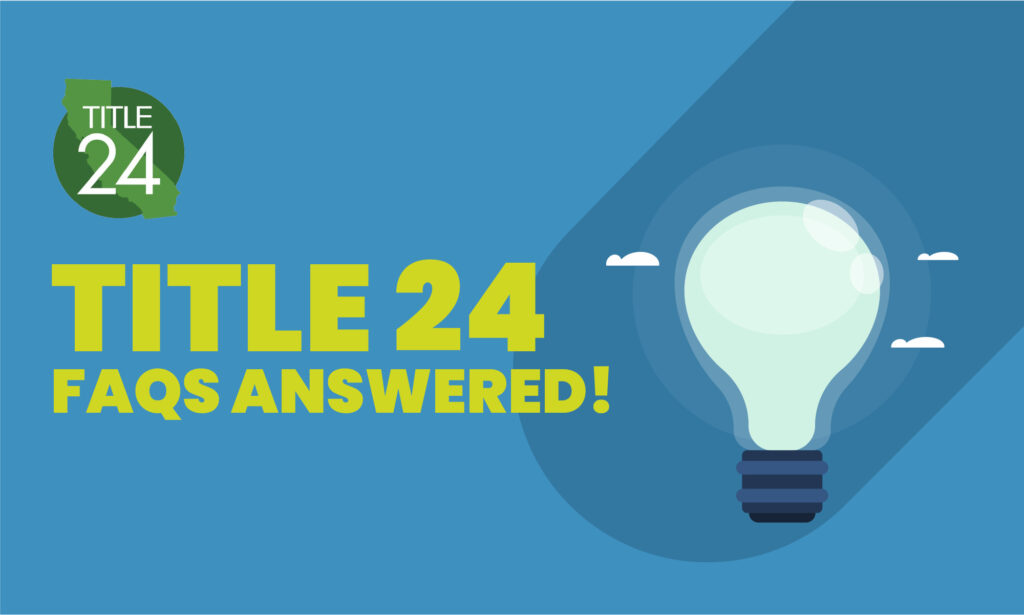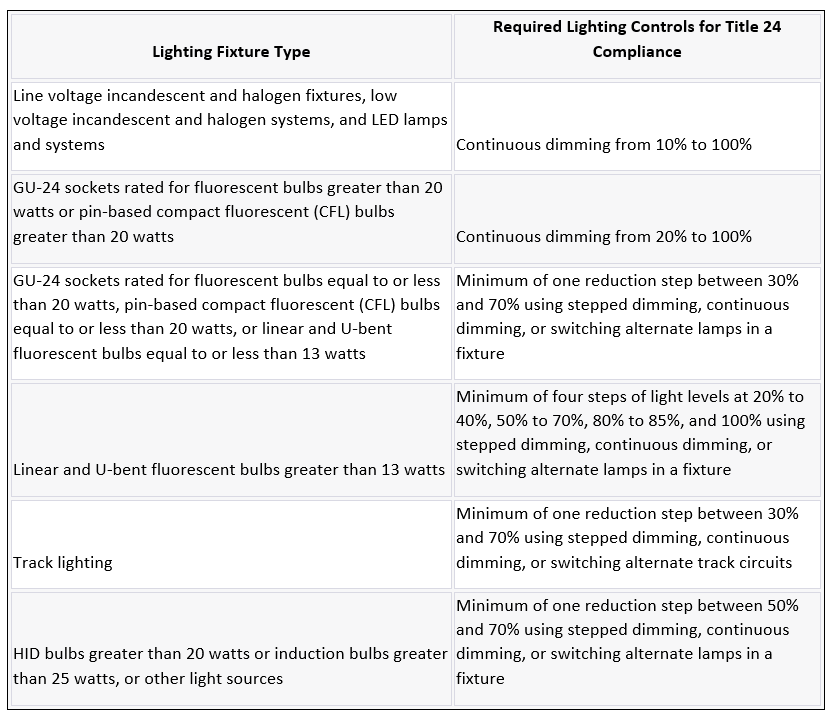14 Frequently Asked Questions About Title 24

Title 24 refers to the California Building Standards Code, which outlines the minimum standards for construction and building safety in the state of California.
Here are 14 frequently asked questions about Title 24:
1. What is Title 24?
Title 24 is the California Building Standards Code, which sets out the minimum standards for the construction, alteration, and repair of buildings in California. It includes standards for energy efficiency, lighting, ventilation, and accessibility.
Dig deeper about Title 24 with our 6-minute read blog.
2. What is the purpose of Title 24?
The purpose of Title 24 is to ensure that buildings in California are safe, healthy, and energy-efficient. It establishes minimum requirements for the design, construction, and maintenance of buildings to protect public health, safety, and welfare.
3. What are the different parts of Title 24?
Title 24 is divided into 12 parts, each addressing a specific area of building construction and safety. These include:
Part 1: Administrative regulations
Part 2: Building regulations
Part 3: Electrical regulations
Part 4: Mechanical regulations
Part 5: Plumbing regulations
Part 6: Energy regulations
Part 7: Fire and life safety regulations
Part 8: Historical building regulations
Part 9: Residential regulations
Part 10: Existing buildings regulations
Part 11: Green building standards code
Part 12: Reference standards code
4. What is the Title 24 energy code?
Part 6 of Title 24 is the California Energy Code, which sets out the minimum requirements for energy efficiency in new and existing buildings. It includes standards for building insulation, lighting, heating, cooling, ventilation, and water heating.
5. When was Title 24 last updated?
Title 24 is updated every three years to reflect new technologies, changing building practices, and advances in safety and energy efficiency. The most recent update, known as the 2022 California Building Standards Code, went into effect on January 1, 2023.
Want to learn more about the latest update? Click here
6. Who enforces Title 24?
Title 24 is enforced by local building departments and code enforcement agencies throughout California. These agencies are responsible for reviewing building plans, inspecting construction sites, and ensuring that buildings meet the minimum standards set out in Title 24.
7. Do all buildings in California have to comply with Title 24?
Most new and existing buildings in California are subject to Title 24, including residential, commercial, and industrial buildings. However, some exemptions and exceptions may apply depending on the size and type of building, its occupancy classification, and other factors.
8. What are the penalties for violating Title 24?
Penalties for violating Title 24 can include fines, enforcement orders, and legal action. In some cases, building owners may be required to make costly repairs or upgrades to bring their buildings into compliance with Title 24 standards.
9. What are some of the key changes in the 2023 lighting code update?
Some of the key changes in the 2023 lighting code update include new requirements for lighting controls, updated lighting power densities for various space types, and new guidelines for daylight responsive controls.
10. Are there any exemptions to Title 24?
Yes, there are some exemptions to Title 24, such as certain types of industrial buildings, agricultural buildings, and buildings that are not connected to the electrical grid. However, most buildings in California will need to comply with Title 24.
11. How do the key changes in the 2023 lighting code update affect lighting specifiers?
Lighting specifiers will need to be aware of the updated lighting power densities and control requirements when designing lighting systems for buildings in California. They may also need to familiarize themselves with new technologies, such as wireless controls and occupancy sensors.
12. What interior lighting controls are required by Title 24 for spaces larger than 100 square feet and using more than 0.5 watts of lighting per square foot?
The type of lighting fixture being used determines the lighting controls needed to comply with Title 24 standards. The following are the required lighting controls according to the type of fixture:

13. According to Title 24, what are the implications if I replace or add more than 10% of the light fixtures in my space or if I change at least 40 light fixtures?
- If the space is using less than 85% of the maximum allowed Lighting Power Density (LPD), the rooms must be separately switched, and either two-level lighting control or the applicable interior lighting control requirements must be met.
- If the space is using between 85% and 100% of the maximum allowed LPD, the rooms must be separately switched, daylight controls must be used where applicable, and either two-level lighting control or the applicable interior lighting control requirements must be met.
- If the space is using more than the maximum allowed LPD, the rooms must be separately switched, daylight controls must be used where applicable, demand response controls must be used, and either two-level lighting control or the applicable interior lighting control requirements must be met.
14. How can I make sure my lighting design meets Title 24 requirements?
To ensure compliance with Title 24, lighting specifiers should consult the official regulations and guidelines, as well as work with experienced lighting manufacturers and distributors who are knowledgeable about the latest updates to the code.
Lumos Controls is committed to providing customers with energy-efficient and environmentally-friendly lighting solutions. Lumos Controls is an easy-to-specify energy code-compliant lighting control system that helps you comply with the big three energy codes and standards, ASHRAE 90.1, IECC, and Title 24.
Our products are Title 24 lighting code compliant, meaning they meet the strict energy efficiency standards set by the California Energy Commission. By using Lumos Controls’ Title 24 compliant products, customers can reduce their energy consumption, lower their electricity bills, and contribute to the effort of reducing greenhouse gas emissions.
Learn how Title 24 compliance made easy with Lumos Controls
If you’re interested in learning more about how Title 24 compliance can be made easy with Lumos Controls, please visit our website to explore our products and solutions.